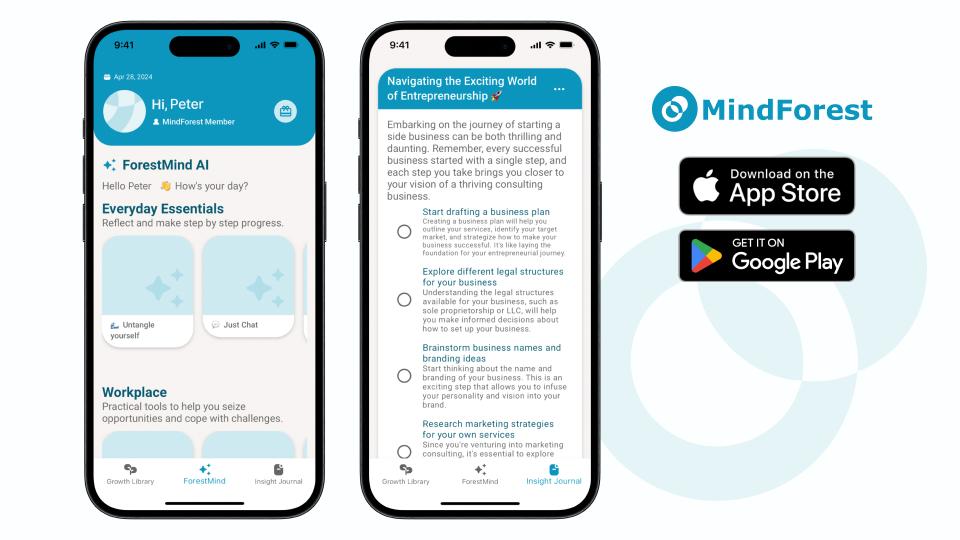
Ghosting and Avoidant Behaviour: Why We Pull Away and 3 Ways to Heal from It
Have you ever experienced ghosting? The two of you were chatting happily the night before, and the next day the person suddenly disappears, never replying again?
Within the Big Five personality traits framework, the extroversion-introversion spectrum is a fundamental dimension. This nuanced understanding of personality, where one can be an extrovert, introvert, or ambivert, was first introduced by the Swiss psychiatrist and psychologist Carl Jung.

People often self-identify as either extroverts or introverts, but the world isn't simply divided into these two types. The concepts of extroversion and introversion are not binary; they exist on a spectrum. Most individuals find their personalities situated somewhere between these extremes, exhibiting traits of both extroverts and introverts. These individuals, known as ambiverts, embody characteristics from both ends of the spectrum. In the realm of psychology, particularly within the Big Five personality traits framework, the extroversion-introversion spectrum is a fundamental dimension. This nuanced understanding of personality, where one can be an extrovert, introvert, or ambivert, was first introduced by the Swiss psychiatrist and psychologist Carl Jung.
The misconception about extroverts often goes like this: "You're so outgoing and talkative! Tell a joke and liven up the atmosphere!" People stereotype extroverts as invariably cheerful and energetic conversationalists. However, being an extrovert doesn't necessarily correlate with being talkative. Extroverts are drawn to a variety of external stimuli, not just conversations—for example, various sports activities. There's also a common misunderstanding that extroverts experience fewer negative emotions than introverts. Extroversion and introversion are merely one aspect of personality and do not govern one's overall psychological state, such as confidence or interiority complex.
Many assume that extroverts are more confident than introverts, which makes them more sociable. In reality, confidence is not an innate state tied to extroversion but is developed over time through personal growth and experiences. While an extroverted personality may indeed facilitate the development of confidence, there is no direct correlation between extroversion, introversion, or being an ambivert and feelings of confidence or insecurity. This spectrum, where individuals may exhibit traits of extroverts, and introverts, or find themselves in the middle as ambiverts, highlights the complexity of personality beyond simple categories.
Prejudices against introverts often manifest in statements like, "So-and-so, an introvert, often skips parties; they're practically invisible—always overlooked! If you don't fit in, you're bound to be left out eventually!" Historically, humans have lived in groups, so naturally, participating in group activities is seen as "normal," and those who deviate, such as introverts, are viewed as "abnormal." Introverts typically avoid large group activities and are not accustomed to initiating conversations, leading to misconceptions about their communication skills or competence. However, these are not accurate representations of introverts. Introverts may prefer not to engage in group activities because solitude energizes them, and speaking less might simply indicate a preference to conserve energy.
In contrast, extroverts are energized by social interactions and often thrive in group settings. This doesn't necessarily mean extroverts are more skilled; they just have different energy sources. Ambiverts, displaying traits of both introverts and extroverts, adapt their behaviour based on the situation, enjoying both lively social interactions and quiet solitude. Understanding these distinctions helps us appreciate the unique strengths and preferences each personality type brings to social interactions.
The primary difference between extroverts and introverts centres on their sources of energy, or how they "recharge."
Extroverts gain energy by engaging in various social activities and interacting with a diverse range of people. They thrive on external stimulation provided by different events and environments. Extroverts often seek out lively social gatherings to recharge, reflecting their need for external engagement.
Introverts, in contrast, find their energy by spending time alone or in quiet surroundings, focusing on their inner world, thinking, and processing emotions. Introverts have a high level of internal activity and are more sensitive to external stimuli, such as noisy, crowded environments, which can make them feel anxious and uncomfortable. They recharge by withdrawing to quieter, more controlled environments.
Ambiverts, who exhibit traits of both extroverts and introverts, adapt their energy sources depending on the context. Ambiverts might find themselves energised by a party on one evening and by a solitary evening at home on another. This flexibility allows ambiverts to enjoy both the depth favoured by introverts and the breadth preferred by extroverts.
In terms of perception of depth and breadth:
Extroverts value breadth, preferring a variety of broad and new experiences. They seek to connect with many different people and situations, showcasing their extroverted nature in seeking external stimuli.
Introverts value depth, tending to delve deeply into one subject or issue at a time. They prefer not to be overwhelmed by too much external information, reflecting their introverted preference for minimal external engagement.
Ambiverts balance these perspectives, sometimes enjoying the breadth of experiences like an extrovert while at other times appreciating the depth of focus characteristic of an introvert.
For those curious about their own level of extroversion, introversion, or ambiversion, the Big Five Personality Test (Big Five Inventory, BFI) can be a useful tool to explore these traits further.
Extroverts are often seen as the life of the party, brimming with energy and possessing a wide range of knowledge and extensive social networks, making them central figures in both social and professional groups. In the workplace, extroverts actively seek opportunities, demonstrate enthusiasm for team tasks, and exhibit strong action-oriented behaviours, which significantly benefit their careers. However, extroverts also face challenges; they may act impulsively, unintentionally offend others, or overcommit to social engagements.
Introverts are perceived as quiet and shy, preferring solitude over social gatherings. They enjoy their own company and excel in tasks that require deep concentration, a trait highly valued in many professional settings. Despite their strengths, introverts may struggle with visibility and networking, which can hinder career advancement.
Ambiverts, displaying traits of both extroverts and introverts, navigate these dynamics uniquely. They can engage energetically in social settings like extroverts and enjoy solitude like introverts, adjusting their behaviour based on the situation. This flexibility helps ambiverts maintain balance, making the most of their extroverted and introverted traits in various social and professional contexts.
MindForest is your tailored AI companion, designed to enhance psychological strength for introverts, extroverts, and ambiverts alike. This app integrates psychological insights with advanced technology to offer tools that build resilience, confidence, and self-understanding—key for thriving in various life aspects.
1) Psychological Courses for Resilience and Emotional Regulation: MindForest delivers courses that help introverts, extroverts, and ambiverts develop resilience and emotional regulation. These courses provide strategies for managing stress, adapting to change, and maintaining emotional stability, supporting psychological growth for all personality types.
2) Empathetic AI Coaching for Diverse Needs: Our AI coach is programmed to understand the unique needs of introverts, extroverts, and ambiverts, offering support and actionable advice that enhances social skills, stress management, and self-image, fostering both personal and professional growth.
3) Reflective Insight Journaling for Personal Development: MindForest creates personalised insight journals that encourage self-reflection and continuous development. These journals help introverts, extroverts, and ambiverts track their progress and tackle challenges across various social contexts.

Download MindForest now to start your journey toward greater psychological resilience and a fulfilling life, tailored to your unique personality traits.
In conclusion, the diverse psychological profiles of extroverts, introverts, and ambiverts demonstrate that each personality type possesses unique strengths for achieving success. Extroverts thrive in lively social settings, introverts excel in reflective, solitary environments, and ambiverts adeptly navigate both. Success doesn’t favour a particular personality; it’s shaped by one's ability to foster interpersonal relationships across life's many arenas, from family to the workplace.
Embrace your distinct traits and learn effective interaction strategies. By leveraging your natural inclinations and developing a growth mindset you can seize life’s opportunities, irrespective of where you fall on the personality spectrum. Let this be a reminder that all personality types have the potential to succeed and cultivate resilience in life.
References
Jung, C. G. (1910). The association method. The American journal of psychology, 21(2), 219-269.
Jung, C. G. (1923).On The Relation Of Analytical Psychology To Poetic Art 1. British Journal of Medical Psychology, 3(3), 213-231.
Discover practical psychology tips you can apply to your everyday life. From building resilience to improving relationships and finding work-life balance, our blog brings expert-backed insights that help you grow.

Have you ever experienced ghosting? The two of you were chatting happily the night before, and the next day the person suddenly disappears, never replying again?

This article breaks down the psychology of nonchalance, signs of a nonchalant dater, the debate nonchalant vs chalant, and what truly matters when forming modern relationships.

Have you ever felt so intensely drawn to someone that you couldn’t stop thinking about them—imagining every possible interaction, decoding every message, overanalysing every glance? If so, you may not be experiencing love, but something more specific: limerence.
Download MindForest and turn these insights into action. Get personalized support from ForestMind AI Coach, track your progress, and unlock your full potential.